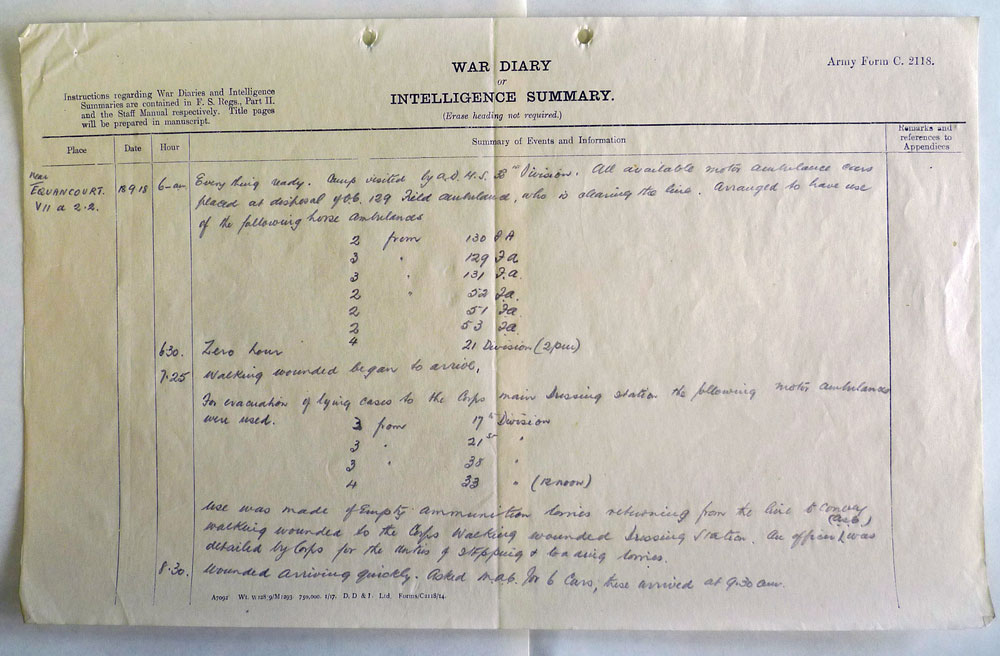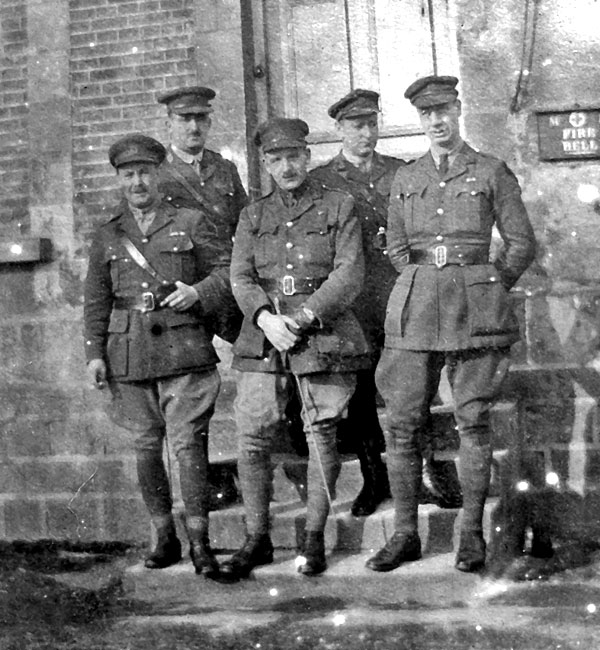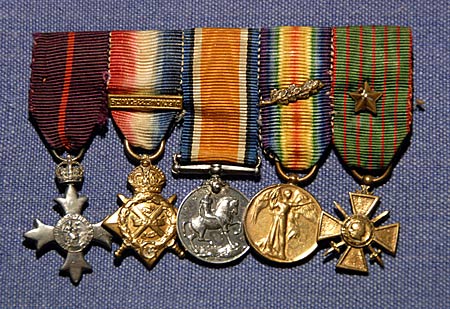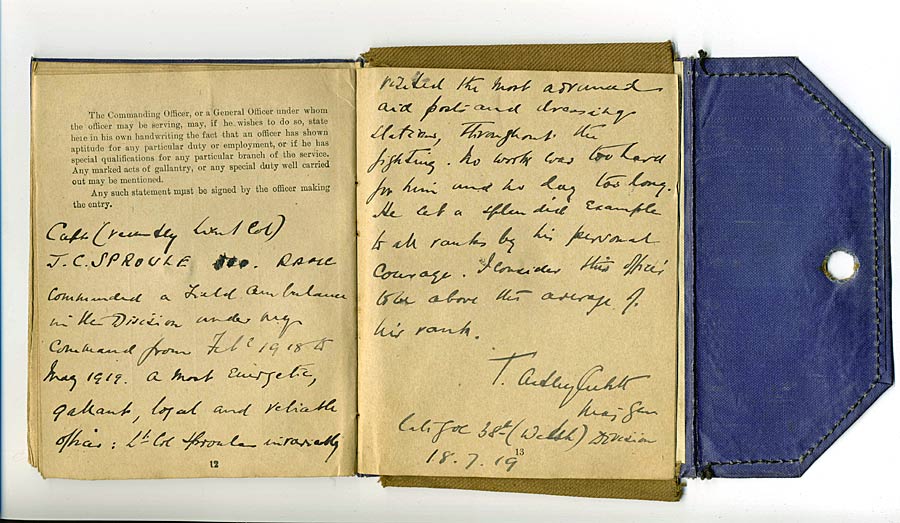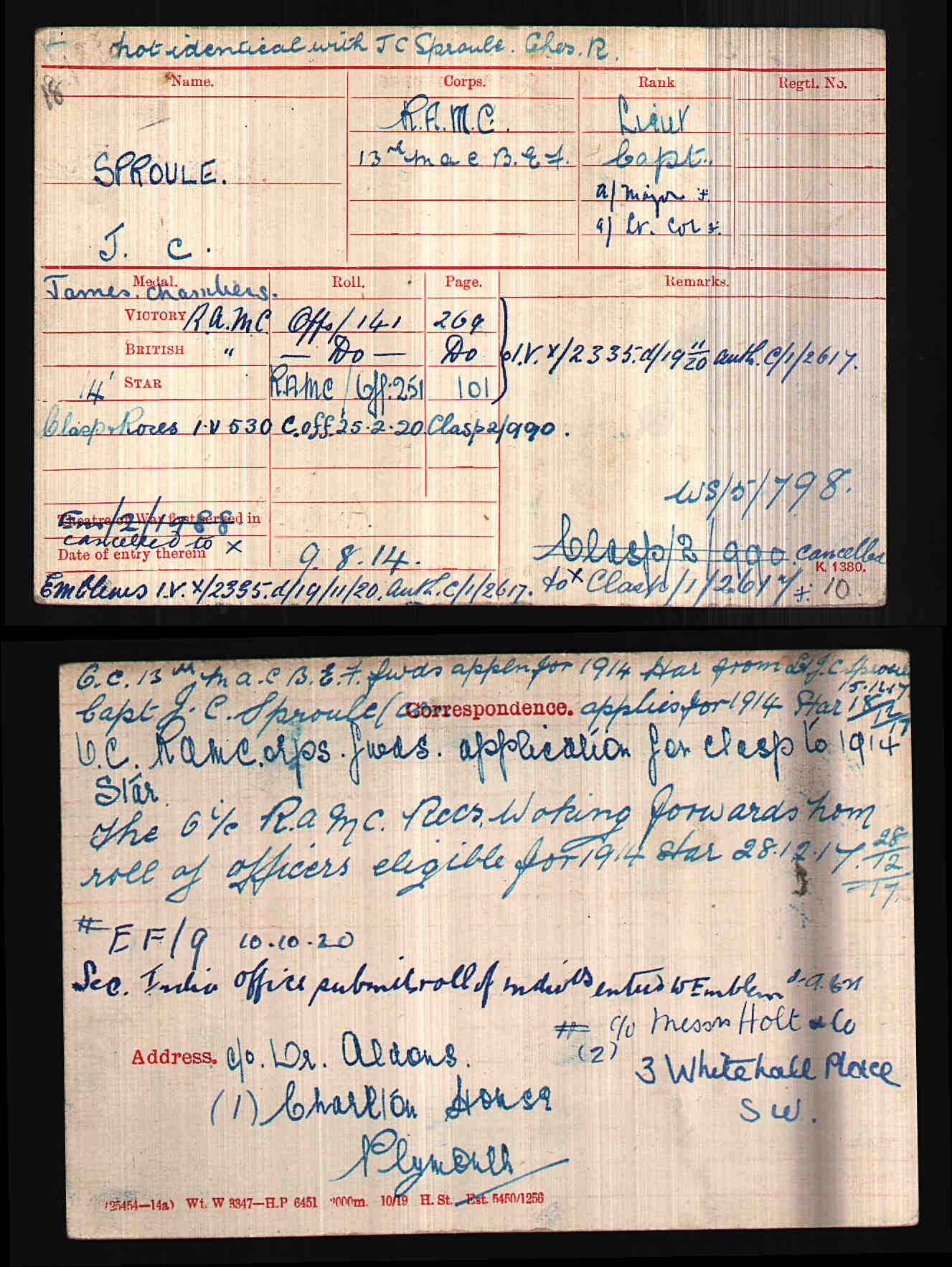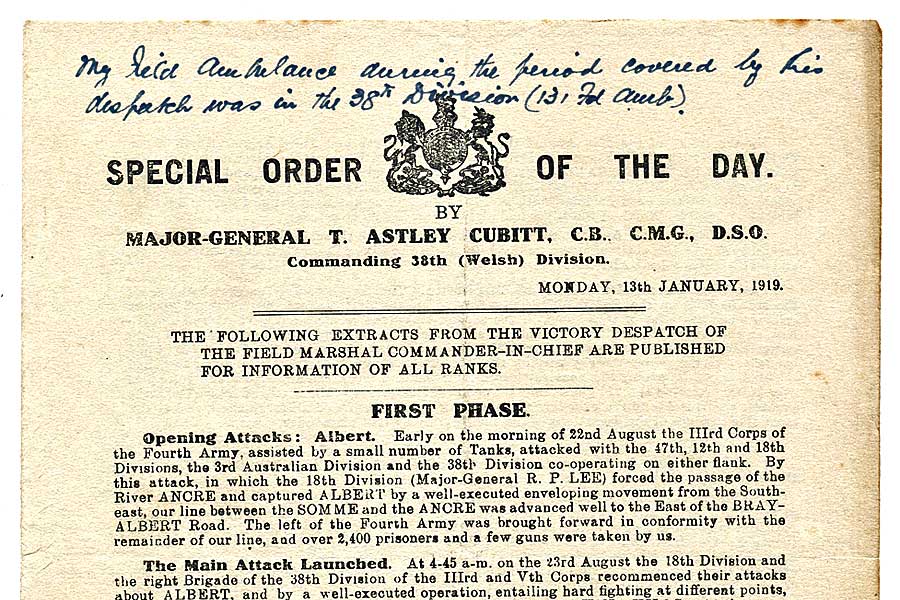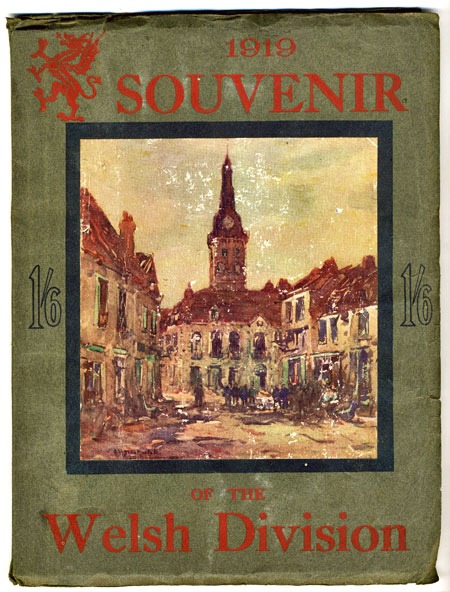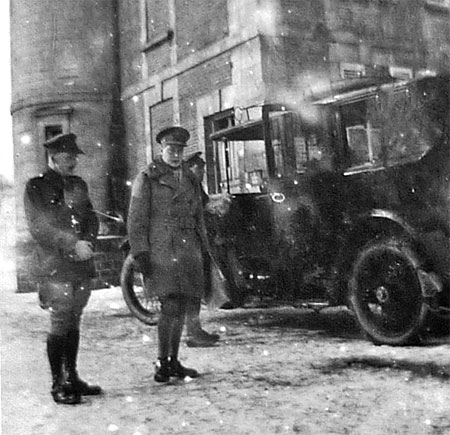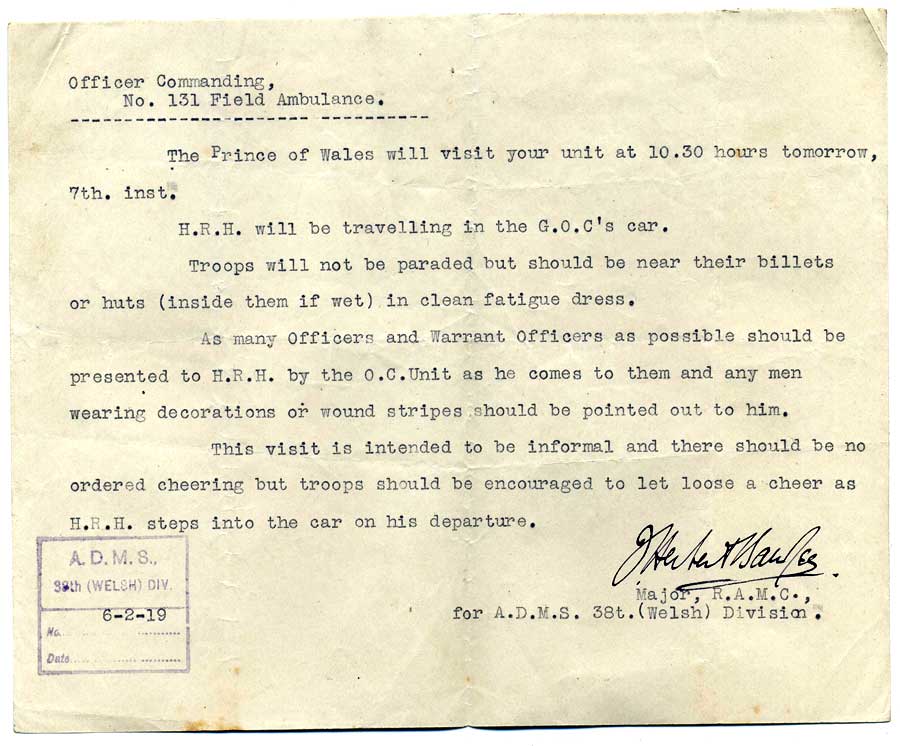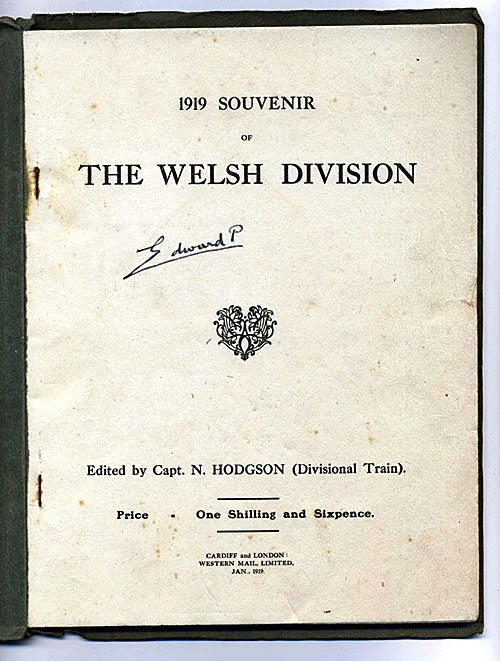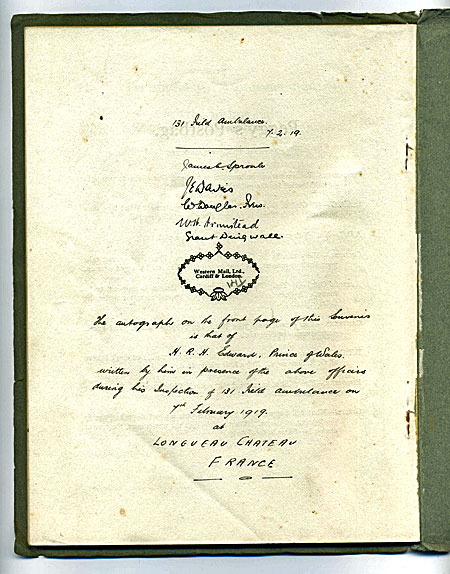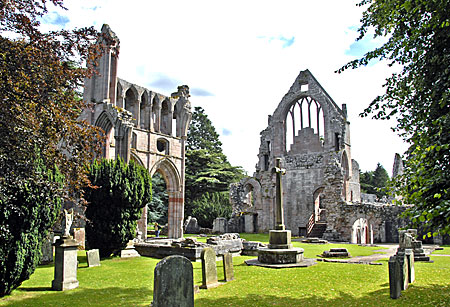|
last update 24 May 2015
Brigadier Jimmy Sproule, CBE, 1887 - 1955 (68) Adrian Fletcher's Maternal Grandfather
Back to ancestors of Adrian Fletcher and Angela Williams
Jimmy and Clare Sproule in Somerton and elsewhere
|
|||||||
|
James Chambers Sproule was born on Sunday August 28 1887 in a large house named "Denamona" - in Fintona, Co Tyrone, Northern Ireland. His secondary education was at the Royal School Raphoe, one of five Royal Schools set up in Northern Ireland by King James I in 1608.
He trained in Dublin, and qualified as a licentiate of the Royal College of Physicians of Ireland and of the Royal College of Surgeons of Ireland in 1912. He was admitted to the British Medical Register on April 24 1912.
On the 26 July 1912 he was appointed a probationary lieutenant in the Royal Army Medical Corps (RAMC). He served in both World Wars, in WW I spending nearly four years in front line positions in the trenches in France. Between the wars he spent many years in Bengal, Bombay and Egypt, interspersed with a smattering of home (Aldershot) postings.
Brig Jimmy Sproule CBE, retired from the Army in 1947 and went to live in Somerton in Somerset with his wife Clare.
|
|
||||||
|
Still in training - Dublin medical students watch a demo - c1911. Jimmy Sproule from Fintona is in the white coat at the right end of the back row.
|
|||||||
|
Jimmy Sproule (1887-1955), Adrian's mother's father, was a career Royal Army Medical Corps (RAMC) Officer who joined the army in 1912 after training as a doctor in Dublin. With 2014 Britain limbering up to 4 years of WWI centenary projects and activities we decided on a visit there to have a drive around Aldershot to get in the mood. The Aldershot "Camp" is a huge area which became the main base for the British Army in the second half of the 1800s, and which also housed the headquarters of the RAMC. Jimmy Sproule was posted there a couple of times, and early in his army career he went to the Aldershot riding school - army doctors were all issued with horses in those days! So this first pic for our 2014 road trip was from 100 years' ago - a class photo of the 1912-13 Aldershot riding school, with Lt Sproule looking unnatural on the right ....
Aldershot 1912-13 (Nov-Jan) 5th Dragoon Guards Riding School
Lt Sproule (25) looking much more than two year's older and not very horse-comfortable at the right end of the Aldershot 1912-13 winter riding school, in the shadow of the Iron Duke and his nag "Copenhagen".
The riders here were:
Lieuts L.J.Poole, H.F.Pauton, R.B.Phillips, I.H.Balfour, Sgt Howard (5th Dragoon Guards), J.E.Hepper, R.C.Carlyle, H.J.S.Shields, J.C.Sproule
|
|||||||
|
April 2014 - near the restored Duke, now guarding a neatly marked sealed car park, the road leading up to the Royal Garrison Church of All Saints has been named Old Contemptibles Avenue - Jimmy was to become one of them in 1914.
Just to add a bit of 2014 colour - nearby April blossom
|
|||||||
|
The 1914-18 World War I Years War was declared on 4 August 1914
|
|||||||
|
Lieutenant J C
Sproule, RAMC, was based with the Military Hospital Devonport
(Plymouth) in the year to Feb 1914. It was probably there that
he met his future wife, Clare Aldous, daughter of a Plymouth surgeon
George Aldous (RAMC TA Major). They were married in Plymouth
on 28 July 1915.
Before that he had gone to France / Belgium on 9 Aug 1914 as part of the BEF (thus becoming an "Old Contemptible").
He was the Medical Officer for
the famous 2nd Battalion Royal Welsh Fusiliers (RWF) and would have been
involved in the early WWI Belgian traumas of Ypres / Mons which
wiped out large slabs of the "Old Army" amidst chaotic encounters. At some stage it seems that Capt Sproule got separated from his unit, as on 5 September 1914, just a month after the outbreak of war, the Battalion War Diary reports "Medical Officer and 5 men rejoined" - no earlier reference to them having unjoined!
2nd Bt Royal Welsh Fusiliers - War Dairy for August to December 1914
Travis Hampton's Dairy (see below) notes on 10 September "It turns out that one of our Battalions, the RWF, had been in action last night near the bridge at La Ferté, so that is where they disappeared to. Sproule their MO had several casualties, but as they had been detached from the Brigade we did not collect from them. At dusk we arrived at Certigny where we stayed the night. The Brigade were in a field close by; they had not been engaged today."
This page from a 2/RWF notebook brings home the terrible carnage of the war.......
Many thanks to military historian David Langley for this and other images and for all his help concerning the 2nd Battalion Royal Welsh Fusiliers in WWI
Jimmy Sproule made six cameo appearances in September and November 1914 in Travis Hampson's diary (link below, you can use the pdf search function to find them). In particular Hampson mentions that on 2 November "I took Lt Harbison out to relieve Sproule as MO to RWFs".
Shortly after Hampson's last encounter with Sproule on 28 November, the latter was was repatriated to England "sick" (we know not how) on 19 December 1914 after having transferred briefly to 19th Field Ambulance. Back in Belgium / France it rained and rained, and the wind blew, then the temperature dropped and it snowed ..... Jimmy also missed the famous Christmas 1914 truce when in some places the two opposing armies sang carols, played football and drank together, to the later horror of their senior officers. A typed page incorporated into the war diary of 2/RWF records one junior officer's account of that Christmas Day ......
More about Mervyn Stronge Richardson from Wiltshire, who was killed in action in March 1916, aged 21.
Four years and millions of young lives were to pass before the guns were silent again.
|
|||||||
|
Dr J C Dunn and Pte Frank Richards, along with Robert Graves and Siegfried Sassoon, all served in the 2nd Battalion Royal Welsh (aka Welch) Fusiliers. Dunn's book is a particularly readable description of the realities of trench warfare.
|
|||||||
|
Jimmy Sproule's RAMC record shows him as sick through to 19 Sept 1915, but his self-kept record book shows the sick period as just a few days, followed by time as MO at the huge Longmoor Camp (Hampshire) and nearby Aldershot. We don't know what the sickness was.
It is possible that he was initially in the large hospital at Devonport near Plymouth, where his father-in-law to be (Dr George Aldous) was County Surgeon. He would have known the place well as he had been stationed there in February 1913.
Dr George asked his daughters to help keep morale up by visiting soldiers, and the story went that Clare was so smitten by love at first sight that she absent-mindedly ate the meal she was meant to be serving Jimmy. They were married in Emmanuel Church, Compton Gifford, on 28 July 1915. None of Jimmy's Northern Irish family was present. The bridesmaids were Clare's 3 sisters - Isabel (d1942), Gerald (d1976) and Mangy (d1979), none of whom were to marry.
|
|||||||
|
A Wartime Wedding - Jimmy Sproule marries Clare Aldous in Plymouth - 28 July 1915 (link to names)
|
|||||||
|
"Hors de Combat" - the brutal possibility of war - this little photo of happy times in Jimmy's pocket book was to be sent back to Clare's father George Aldous in the event of his death. The photo shows his wife (to be) Clare, Jimmy and maybe a chaperoning sister! I remember being told that at one stage Clare received a telegram notifying that Jimmy was missing or dead - later to be corrected by one which said he was'nt.
|
|||||||
|
|
|
||||||
|
All records agree that Capt Sproule was back in France on 21 September 1915, and he stayed there for 3 years to the end of WWI in November 1918, and then for a further year to 10 January 1920 as MO of the demobilizing 38th (Welsh) Division.
However, we do not know his location for the two and a half years from September 1915 until the start of his final war posting with 131 Field Ambulance, which he commanded from 25 February 1918. He replaced Lt Col Robert Herbert Mills-Roberts (b1862), a veteran doctor and RWF officer, who had been responsible for raising 131 in the early months of the war and had commanded it ever since.
This is the war diary page for 131 Field Ambulance for the day (25 February 1918) Captain going on Lt Col J C Sproule arrived, and his own signed entry for the following day:
Thanks to Barbara who looks after "RAMC in the Great War" for helping with this page and other information. Link to Jimmy Sproule in the web-site "RAMC in WWI"
The relatively new National Archives building at Kew (below) is the home of war diaries and squillions of other things.- retrieving them to look at / photogeraph is straightforward - as long as you can visit Kew!
|
|||||||
|
|
|
||||||
|
WW1 Field Ambulance units (especially 131 Field Ambulance) and the 38th (Welsh) Division
131 Field Ambulance was one of three Field Ambulance units (each having about 200 men) serving the "New Army" 38th (Welsh) Division (Maj-General Astley-Cubitt from May 1918), which was latterly part of V Corps / 3rd Army (General Byng) fighting in the Amiens / Albert/ / Bapaume area. The Division had earlier taken part in the Battle of Mametz Wood in 1916 where it suffered so badly that it was pulled out of the front line for some months.
photo "We Are Dave" on Picasa 2007 38th (Welsh) Division Memorial at Mametz Wood, between Albert and Bapaume
|
|||||||
|
Peggy, Clare and Jimmy - Bigbury, August 1918
|
Just for fun, on the right is the amazingly modern looking Margravine Uta, wife of Margrave Ekkehard II, statued in Naumburg Cathedral (Eastern Germany) c1250. Interesting resemblance to Clare!
|
||||||
|
During Jimmy's time in France there would have been some breaks for home leave - one of which must have been around October 1916, as his daughter Peggy was born in Plymouth on 30 July 1917 ! He had another spell of leave from the front between 11 August and 12 September 1918, and spent time with Clare, Peggy and his in-laws in his father-in-law's beach house at Bigbury.
Whilst Jimmy was away from the front the 4th Army (complete with Australian Divisions) had decisively halted and turned the tide of recent German advances:
"August 8, 1918 - Germans in the Somme experience the "Black Day of the German Army" as later described by General Ludendorff. This occurs as the British 4th Army using 456 tanks attacks German positions east of Amiens. Six German divisions quickly fall apart and 13,000 prisoners are taken during the rapid 7-mile advance. The attack is only slowed when the Germans rush in nine divisions, their last reserves on the Western Front." (www.historyplace.com).
|
|||||||
|
1918
|
|||||||
|
On August 21st Jimmy's 3rd Army joined in the Allied advance. This War Diary entry from Equancourt on 18 September 1918, six days after his return from leave, summarizes the availability of Horse Ambulances, the commencement of battle, and the increasing flow of wounded soldiers .......
UK NATIONAL ARCHIVES - THE 1918 ALLIED COUNTER OFFENSIVE
The battles the 38th (Welsh) Division participated in in 1918 included the Second Battle of the Somme in Aug-Sep 1918 and the Battles of the Hindenburg Line in Sep-Oct 1918, and Jimmy Sproule would have been in charge of casualty management for all of these - which meant recovering wounded soldiers from the front line and keeping them alive before passing them back to field hospitals.
|
|||||||
|
11am 11th November 1918 - Armistice
131 Field Ambulance War Diary - 10 & 11 November 1918, Berlaimont, E France
11-11-18 .... the horror is over and army admin immediately swings into action for peace - bandsmen are released from stretcher bearing and returned to their bands.
|
|||||||
|
Capt / Lt Colonel Sproule (centre) and other RAMC officers - WWI
|
|||||||
|
The 38th (Welsh) Division suffered nearly 30,000 casualties during WW I - 6,112 men killed and missing, 23,268 wounded. Demobilization took place in 1919, with Jimmy Sproule now Chief Divisional Medical Officer.
The last year of the WWI
|
|||||||
|
These are the miniatures of my grandfather's WW I medals. They include the "Old Contemptibles" medal, second from left, aka the 1914 Star or colloquially the Mons Star. It was awarded to British Expeditionary Force soldiers who went to France between 5 August (he went on the 9th) and 22 November 1914, with the bar signifying service under enemy fire. Next in line is the British War Medal, followed by the Victory Medal. The oak leaf on the Victory Medal indicates a "Mention in Despatches" for gallantry (in fact he got two mentions and was recommended for a DSO, which somehow got changed to an OBE). Last in line is the French Croix de Guerre (right). On the left is the OBE.
Medals awarded to members of 131st Field Ambulance.
After the war finished, Major General Astley-Cubitt, General Officer Commanding the Welsh Division, wrote in Jimmy Sproule's service record book :
"A most energetic, gallant, loyal and reliable officer: Lt Col Sproule invariably visited the most advanced aid posts and dressing stations throughout the fighting. No work was too hard for him, and no day too long. He set a splendid example to all ranks by his personal courage."
Jimmy Sproule's WW I service record book - Click to be able to browse the whole book. The General (Astley-Cubitt) thought that JCS had been awarded the DSO (written then scratched out), but this did not in fact happen due to some administrative incompetence or skulduggery and it got morphed into an OBE (not usually given as a valour medal). Also on the record are two mentions in despatches for gallantry, and a Croix de Guerre from France.
WWI medal record card - British Empire Bureaucracy at its finest
|
|||||||
|
|
|||||||
|
Link to Jimmy Sproule in the web-site "RAMC in WWI"
Link to "The Long Long Trail" - the British Army of 1914-18 for Family Historians 38th (Welsh) Division in "The Long Long Trail"
|
|||||||
|
The tomb of Field Marshal Douglas Haig, the controversial British WW I Commander, can be found in the beautiful ruins of Dryburgh Abbey on the Scottish Borders. |
|
||||||
|
Brigadier Jimmy Sproule, Clare Sproule, Peggy and Brian after WWI - 1919 to 1958
|
|||||||
|
Brig J.C.Sproule's Army Service Record Colonel Sproule's 1941 C B E Citation
|
|||||||
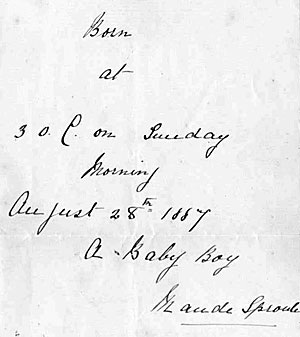
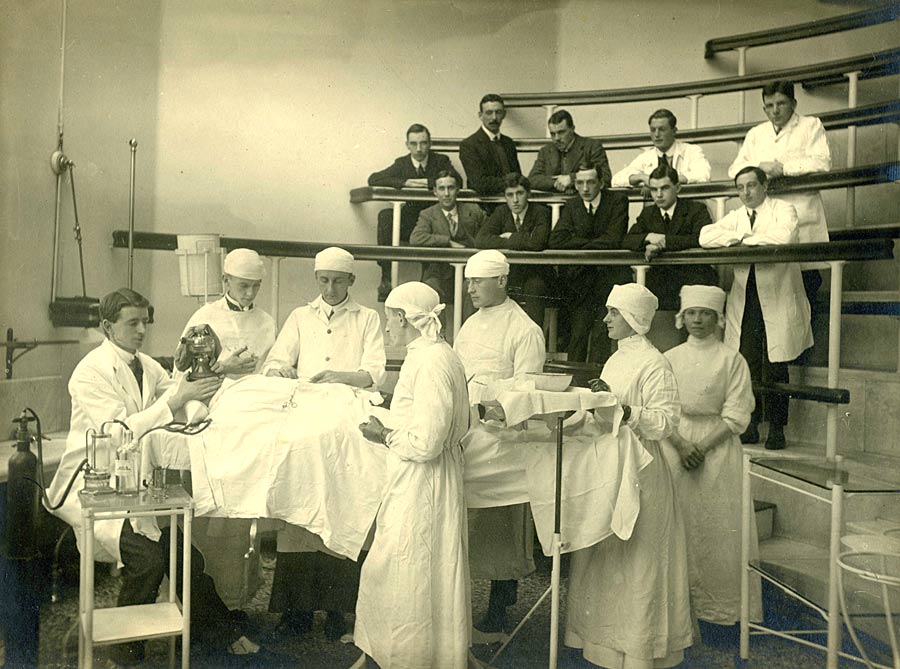



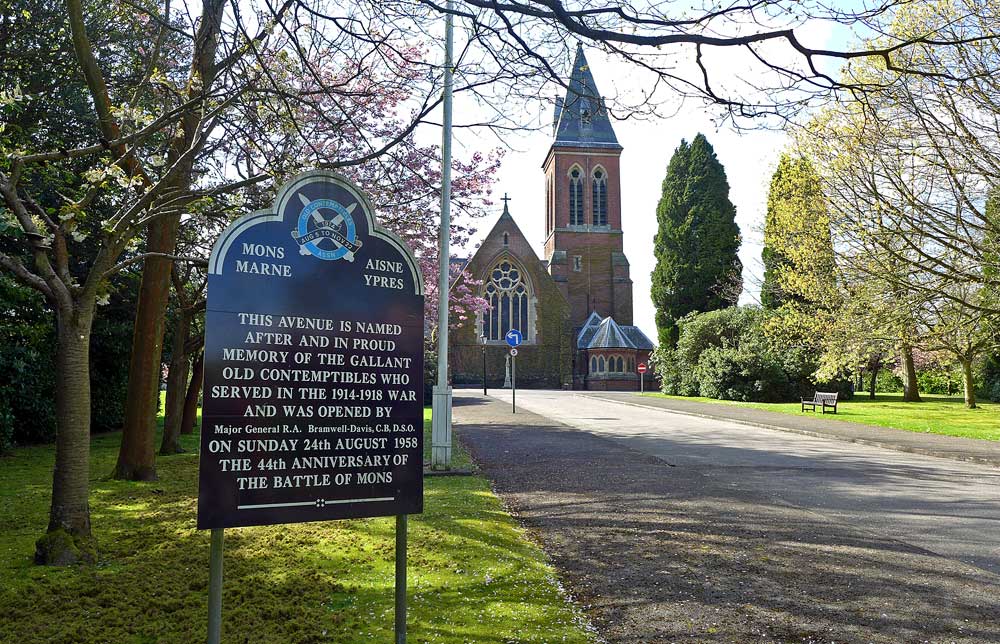

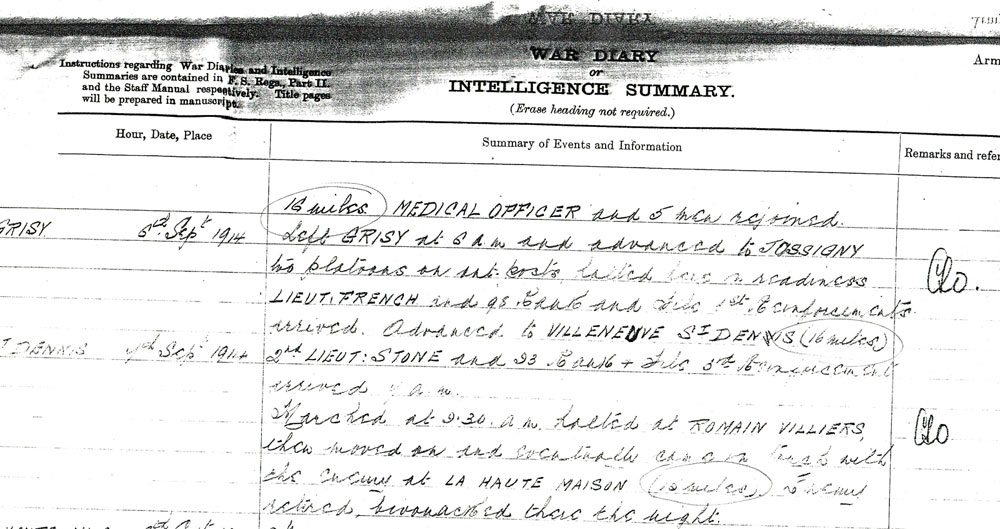

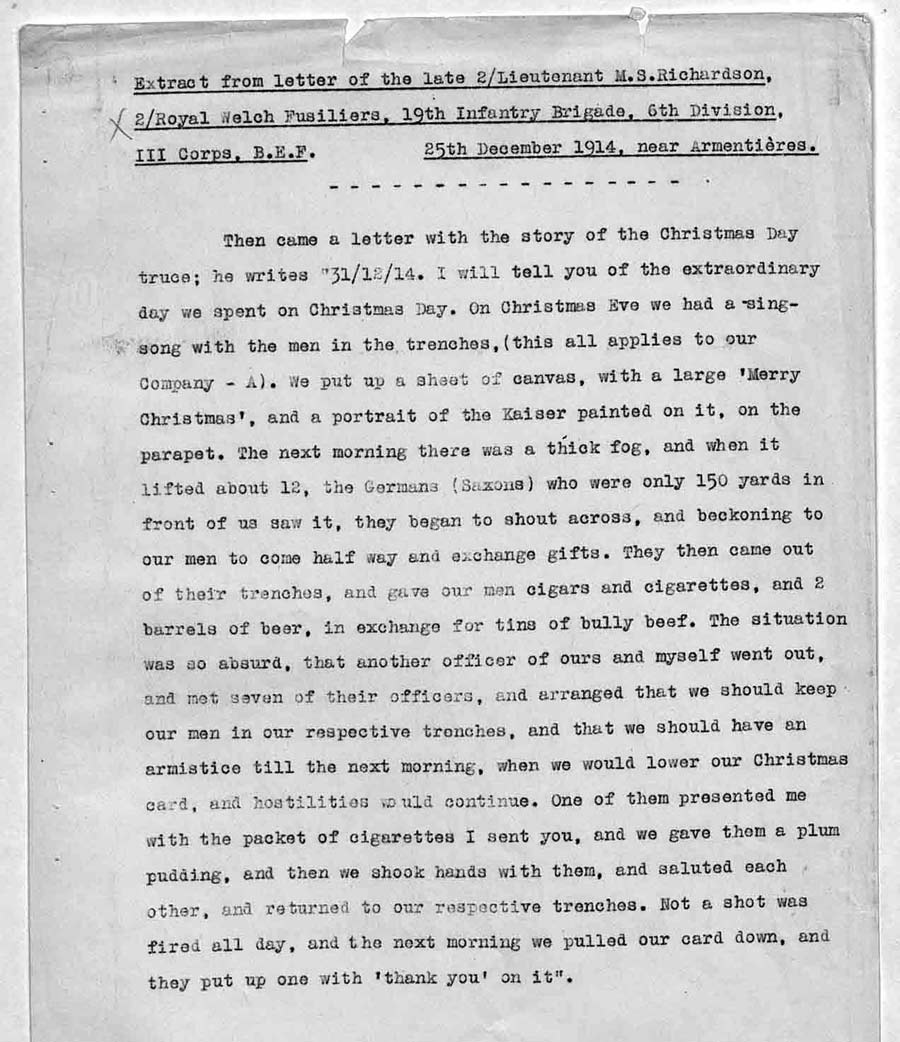

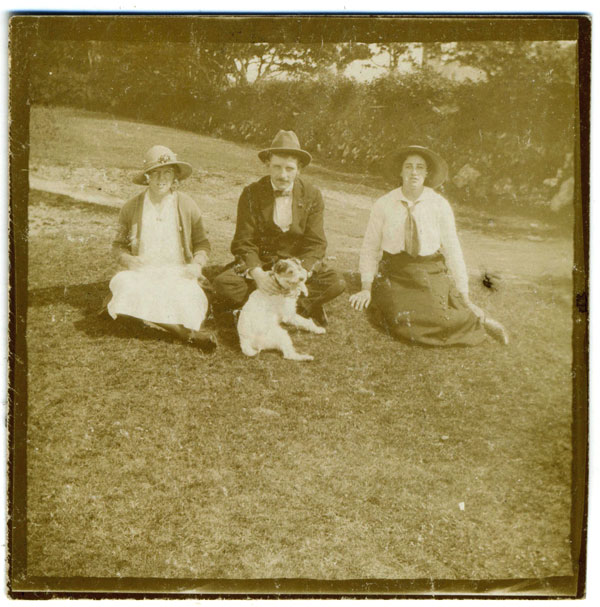
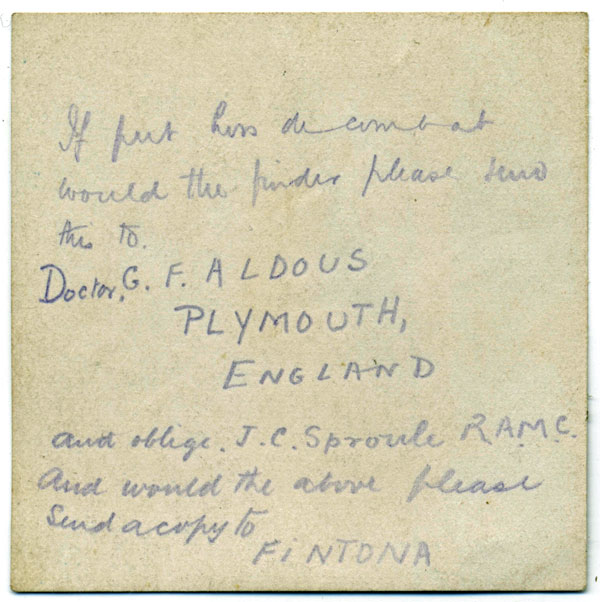
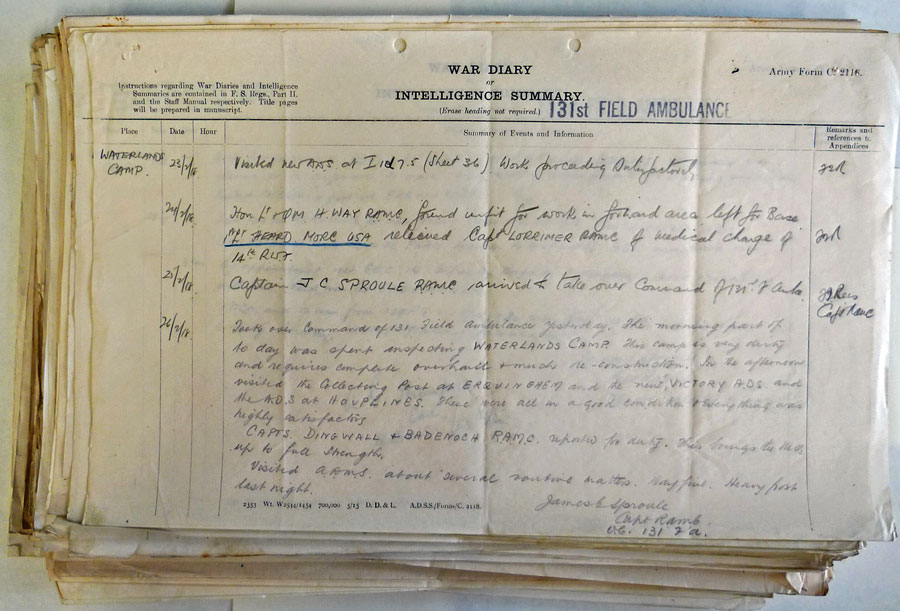
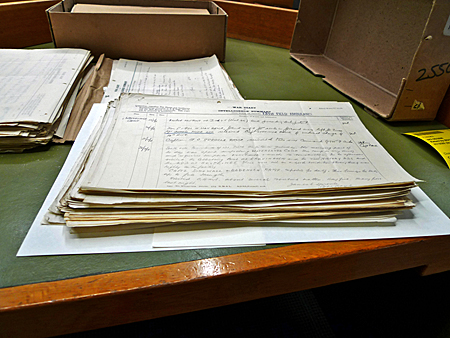
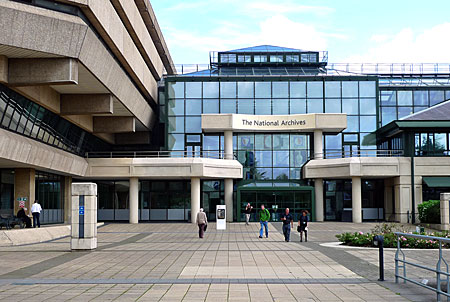

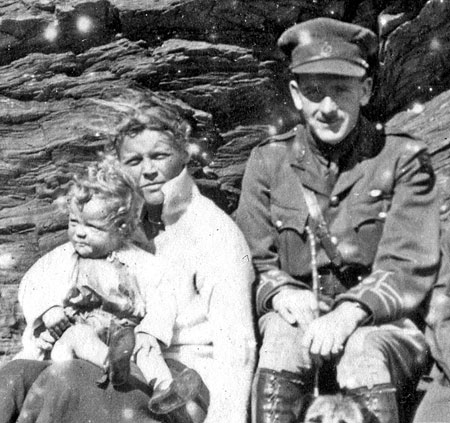
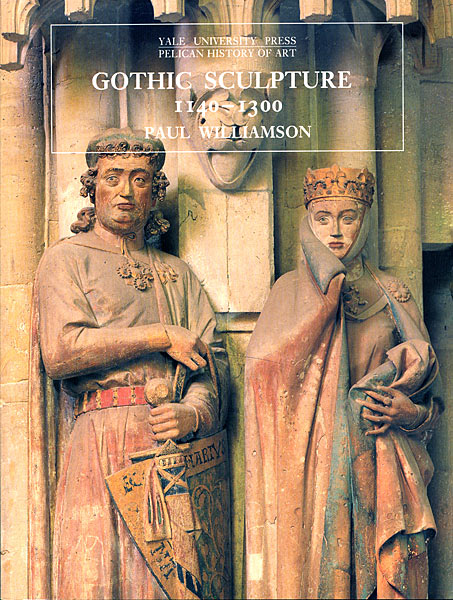
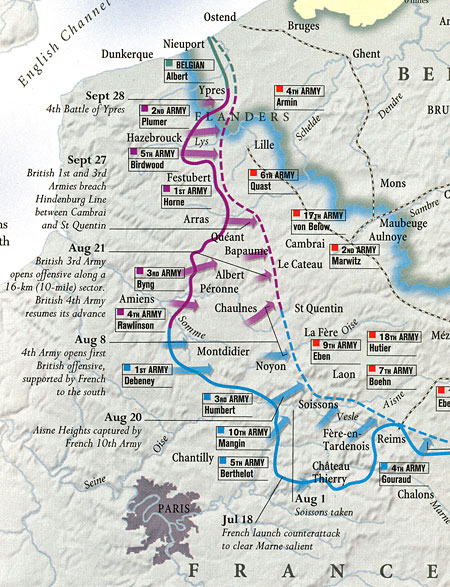 from
from
